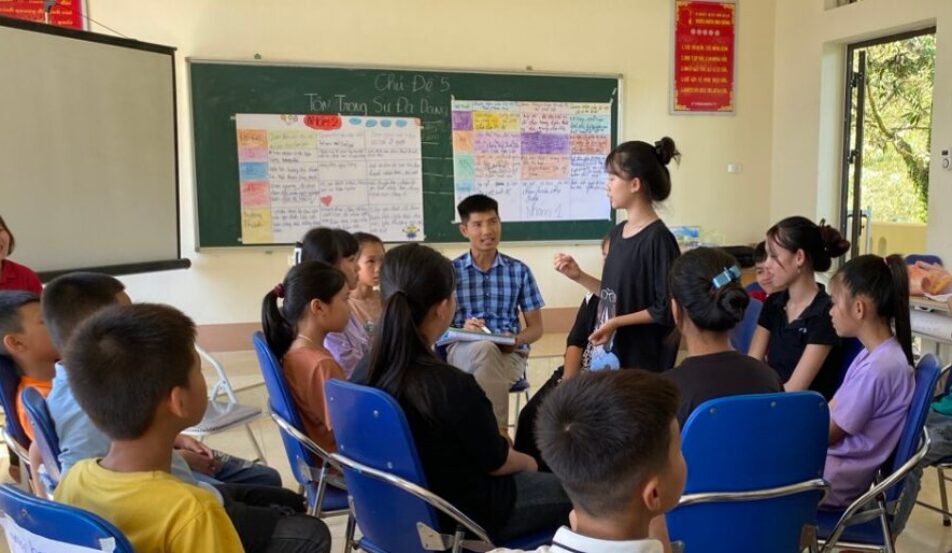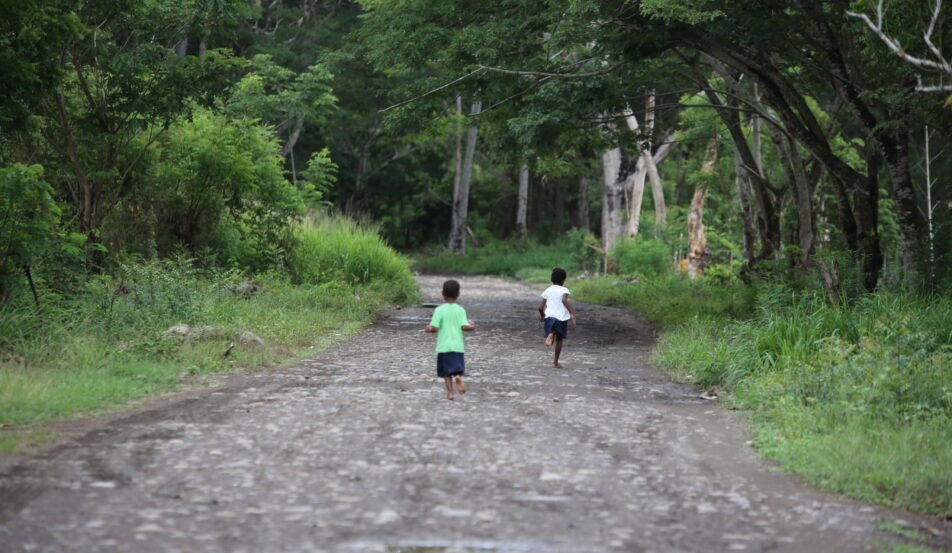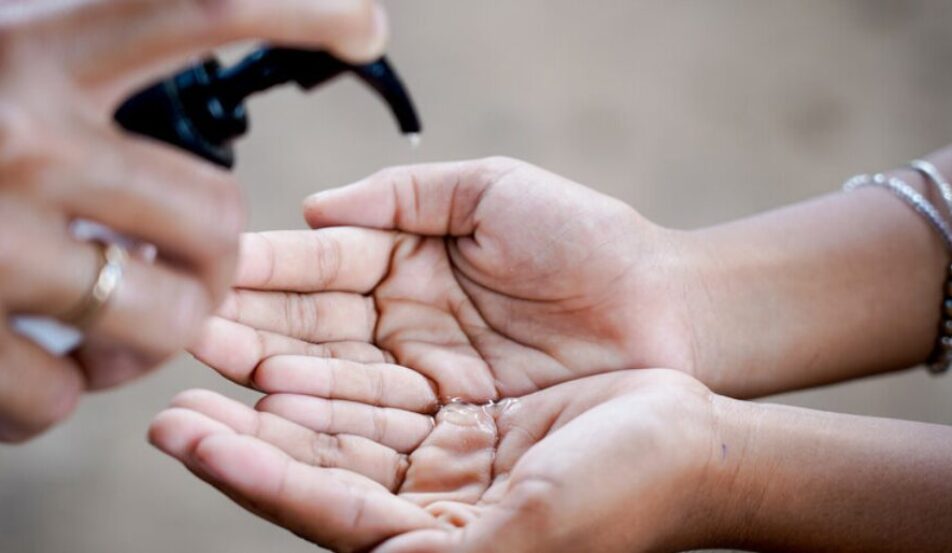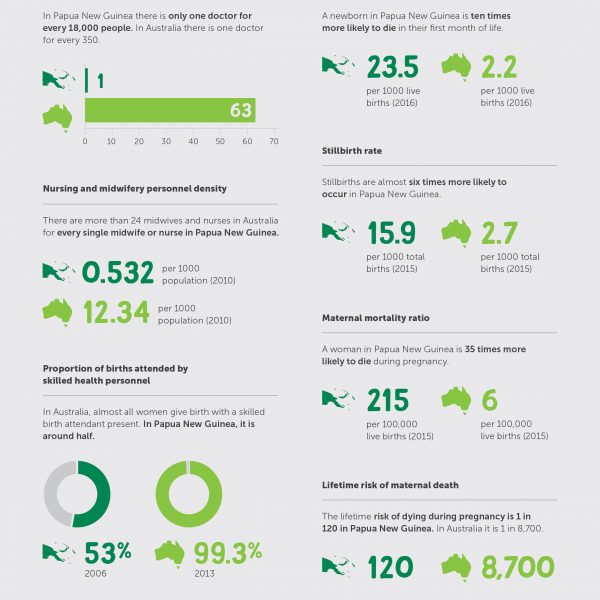Dozens of babies are born each day in Port Moresby General Hospital’s 24-bed labour ward. The ward is crowded, and patient turnover is high. The hospital struggles to keep up with the demand of a growing population, and there is a critical need for more doctors, nurses and midwives across the country.
In the labour ward of Port Moresby General, there are three full-time doctors, one resident and two registrars. During every eight-hour shift there are at least three midwives, sometimes as many as six. This small team is responsible for the births of about 15,000 babies each year, or about 41 babies a day.
Despite these challenges, Port Moresby General Hospital is better resourced than the facilities in PNG’s regional areas, where 85 per cent of the population live.
Rural health clinics, where they exist, are rudimentary, lack basic equipment and medicines, and must service the vast health needs of impoverished communities.
Community healthcare workers in village clinics have only minimal training, and often work in extremely poor conditions. Clinics lack electricity, running water and toilets, mattresses for consulting beds, and even basic medication.
Because of this lack of health infrastructure, as many as 80% of women in some regions of PNG will give birth at home, compared to less than 1% in Australia.
Giving birth at home leaves women in PNG vulnerable to the common causes of maternal deaths: severe bleeding, infections, eclampsia and complications during delivery.
Tragically, with access to proper healthcare, the majority of these deaths could be prevented.







